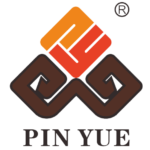Understanding Woven Bag Types: A Comprehensive Guide
Woven bags are a versatile, economical, and practical packaging material widely used in cement, logistics, agriculture, feed, and other industries. However, different types of woven bags vary significantly in material, structure, and use. This article analyzes the characteristics, uses, and selection tips for ordinary woven bags, woven bags with inner bags, and laminated woven bags to help you choose the most suitable woven bag products based on your specific needs.
1. Ordinary Woven Bags: Economical and Practical Basic Choice
- Features:
- Material: Ordinary woven bags are typically made of polypropylene (PP) or polyethylene (PE) woven cloth, offering high strength and wear resistance.
- Price: Due to the simple production process, the price of ordinary woven bags is low, making them suitable for large-scale use.
- Disposable: Ordinary woven bags are mostly disposable and difficult to recycle after use, often treated as waste.
- Purpose:
- Cement Packaging: Ordinary woven bags are the primary packaging material in the cement industry, effectively protecting cement from moisture and pollution.
- Logistics and Transportation: Used for packaging bulk goods such as ore, sand, and gravel, providing good pressure and moisture resistance.
- Advantages and Disadvantages:
- Advantages: Low price, high strength, and wide application range.
- Disadvantages: Not reusable and poor environmental protection.
2. Woven Bags with Inner Bags: High Quality and Reusable Options
- Features:
- Structure: Woven bags with inner bags have an additional inner bag, usually made of plastic film, providing better sealing and moisture resistance.
- Qualité: Due to the presence of the inner bag, the quality and durability are significantly better than ordinary woven bags.
- Reusable: Woven bags with inner bags can be used multiple times, reducing packaging costs.
- Uses:
- Feed Packaging: Used for poultry feed, pet feed, etc., to ensure the dryness and hygiene of the feed.
- Fertilizer Packaging: Suitable for chemical fertilizers and organic fertilizers, preventing fertilizers from getting damp and agglomerating.
- Flour Packaging: Used in the food industry to ensure the purity and pollution-free nature of flour.
- Advantages and Disadvantages:
- Advantages: Good sealing, reusable, and wide range of applications.
- Disadvantages: High price and complex production process.
3. Laminated Woven Bags: Innovative Design without Sewing
- Features:
- Structure: Laminated Woven Bags are covered with a layer of plastic film, making them more waterproof and wear-resistant.
- Production Process: Laminated Woven Bags do not need to be sewn, resulting in higher production efficiency.
- Appearance: The surface of laminated woven bags is smooth, offering a better printing effect and catering to high-end packaging needs.
- Uses:
- Cloth Roll Packaging: Used for packaging textiles, carpets, and other cloth rolls to protect the products from pollution and damage.
- Chemical Product Packaging: Suitable for packaging powdered or granular chemical products, providing good moisture resistance and sealing.
- Food Packaging: Used for packaging rice, grains, and other foods to ensure food safety and hygiene.
- Advantages and Disadvantages:
- Advantages: Good waterproofness, high production efficiency, and exquisite appearance.
- Disadvantages: High cost and poor environmental protection.
4. How to Choose the Right Woven Bag According to the Purpose
- Cement and Logistics Industry:
- Recommended Type: Ordinary woven bag.
- Reason: Low price and meets basic packaging needs.
- Feed and Fertilizer Industry:
- Recommended Type: Woven bag with inner bag.
- Reason: Good sealing, reusable, and suitable for long-term storage and transportation.
- Food and Chemical Industry:
- Recommended Type: Laminated woven bag.
- Reason: Strong waterproofness and exquisite appearance, suitable for high-end packaging needs.
- Environmental Protection Needs:
- Recommended Type: Degradable woven bag or woven bag with inner bag.
- Reason: Reduces environmental pollution and complies with the concept of sustainable development.
5. Environmental Protection Trend and Future Development of Woven Bags
- Application of Degradable Materials:
With enhanced environmental awareness, more companies are using degradable materials to make woven bags to reduce environmental pollution. - Intelligent Production:
Introducing intelligent production equipment improves the production efficiency and quality of woven bags to meet diverse market needs. - Circular Economy Model:
Promote the recycling and reuse of woven bags, realize resource recycling, and reduce production costs.
Conclusion
As an important packaging material, woven bags have various types and uses. By understanding the characteristics and uses of ordinary woven bags, woven bags with inner bags, and laminated woven bags, you can choose the most suitable woven bag products according to specific needs and give full play to their role. In the future, with the advancement of environmental protection technology, woven bags will play an important role in more fields, providing efficient and environmentally friendly packaging solutions for all walks of life.
